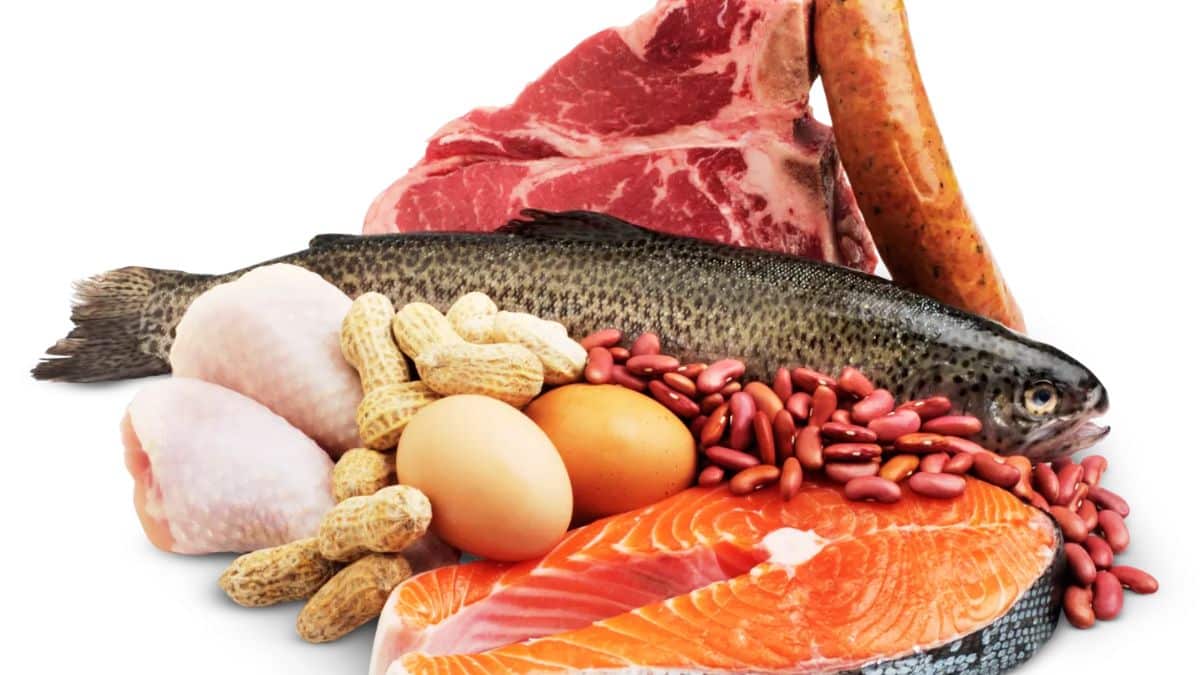Protein is well known for its role in muscle development, but it also performs a variety of other functions in the body. It provides energy for cell repair and growth, improves satiety and weight management, and aids the immune system. Protein is also important for structural support, enzymes, and hormones, so it can benefit everything from muscular function to immune health.
1. Chicken
Chicken is the most readily available meat protein for human consumption, according to the USDA. White flesh chicken is a lean protein that is high in protein and low in fat.
A 4-ounce boneless, skinless chicken breast has 32 grammes of protein in addition to iron, zinc, choline, and B vitamins. Chicken is an extremely flexible protein that can be used in virtually any recipe.
The typical chicken cutlet goes well with a cream sauce, and a delightful goat cheese filling can be stuffed into a chicken breast. Alternatively, add chicken to salads and casseroles.
2. Fatty Fish
Although the word “fatty” may put you off, fish is a healthy protein with numerous health advantages. Cold water [fatty] fish like salmon, tuna, and trout are high in omega-3 fats, which are good for your heart. Eating fish has been linked to a lower incidence of stroke in studies. Furthermore, research suggests that eating seafood may be related with lower calorie intake, and 3 ounces of salmon has 17 grammes of protein.
3. Pulses
Pulses are the dry, edible seeds of legume plants, which include meals such as chickpeas, beans, dried peas, and lentils. Pulses are a high-protein plant-based staple that is both healthful and flexible.
Lentils have 9 grammes of protein per 12-cup dish, chickpeas include 7 grammes, and dried peas contain a staggering 20 grammes of protein per 12-cup serving. Not to mention that pulses are high in nutrients, like folate, potassium, iron, magnesium, zinc, and B vitamins.
Because they have a moderate flavour and texture, they may be added to practically any meal, including lentil soup, sheet-pan meals, and pasta. Try incorporating lentils into baked dishes to reduce fat while increasing protein and fibre.
4. Tofu
Tofu is a versatile plant protein manufactured from soybeans. A 3-ounce serving of tofu contains 9 grammes of satiety-promoting protein and only 71 calories, making it a great choice for weight management. Tofu is also a fantastic source of plant-based calcium and iron, and it comes in a variety of textures. Add [soft] tofu to your smoothie for extra protein and a creamy texture. Firm tofu is delicious in stir-fries, tacos, and even as “croutons.”
5. Nuts
While the protein content of nuts varies, some species, such as pistachios and almonds, have 6 grammes per 1-ounce serving. According to research, including pistachios in the diet can help with weight loss when combined with a calorie-restricted diet and may provide other health benefits such as blood pressure reduction.
Furthermore, a 2022 study published in the European Journal of Nutrition discovered that eating 30 to 50 grammes of almonds per day lowered total daily calorie consumption. Unsalted nuts are a great portable alternative for healthy snacking, but they’re also great for roasting, using as a crust for sweet and savoury recipes, and including into energy bites.


